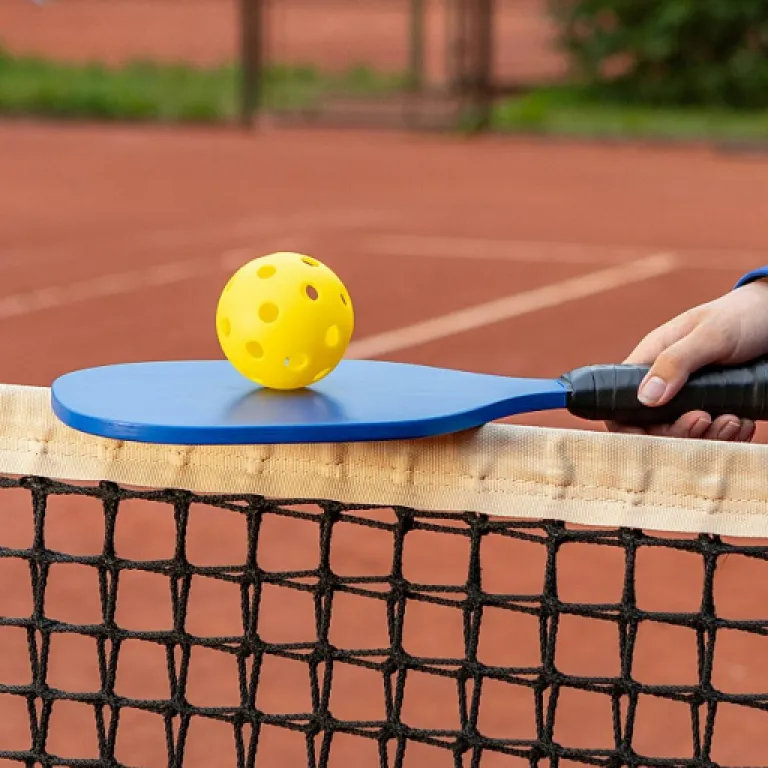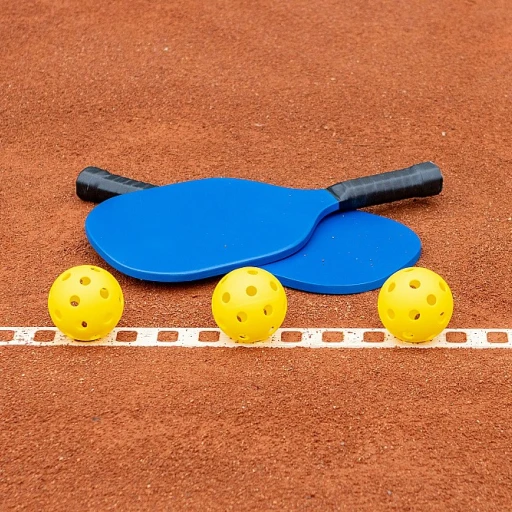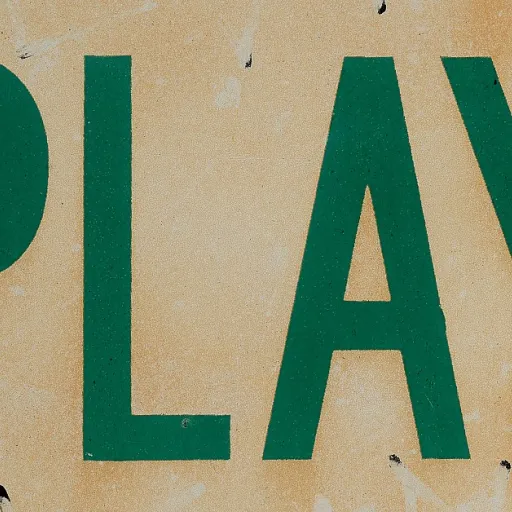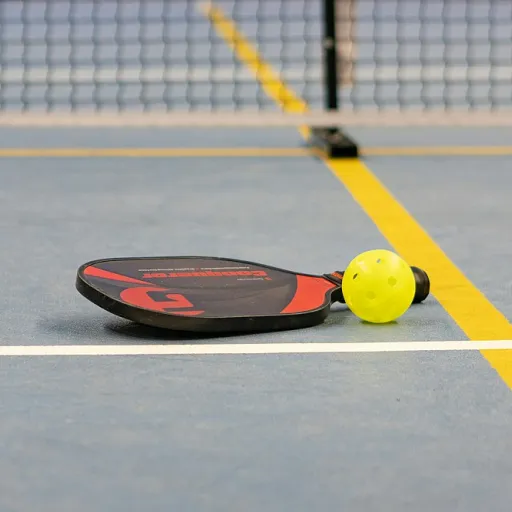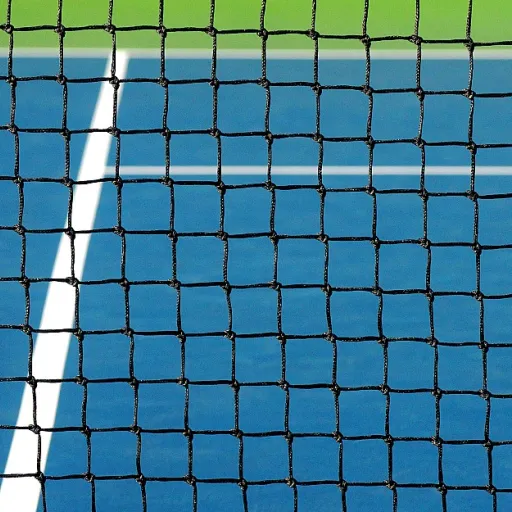
Understanding the differences between tennis and pickleball courts
Key Differences in Court Size and Markings
When comparing pickleball and tennis courts, the first thing to notice is the difference in size and layout. A standard tennis court measures 78 feet long and 27 feet wide for singles (36 feet for doubles), while a pickleball court is much smaller at 44 feet long and 20 feet wide. This means a pickleball court can easily fit within the boundaries of a tennis court, but the playing area and movement required are quite different.
- Pickleball court dimensions: 44 feet by 20 feet
- Tennis court dimensions: 78 feet by 27 feet (singles), 36 feet (doubles)
- Net height: Tennis nets are 36 inches at the center, while pickleball nets are slightly lower at 34 inches in the center and 36 inches at the posts
- Lines and markings: Pickleball courts have unique lines, including a 7-foot non-volley zone (also called the kitchen) on each side of the net, which is not present in tennis
The surface of both courts is usually similar, often made of asphalt or concrete, but the markings and net height set them apart. When playing pickleball on a tennis court, you will need to mark the pickleball lines clearly to avoid confusion with the existing tennis lines. This is especially important for the non-volley zone, which plays a key role in the pickleball game.
For a deeper dive into the exact pickleball court size and dimensions, you can find detailed measurements and diagrams to help you visualize how a pickleball court fits within a tennis court.
Impact on Play and Equipment
Because the pickleball court is smaller, players experience a faster-paced game with less running compared to tennis. The ball used in pickleball is also lighter and has holes, which affects how it moves across the court surface. The equipment, including paddles and the net, is designed specifically for the pickleball game and does not directly match tennis gear.
Understanding these differences is essential before you start converting tennis courts for pickleball play or sharing courts with tennis players. It helps you adapt your strategy, movement, and equipment for the best possible experience on either court.
Adapting a tennis court for pickleball play
Steps to Set Up a Tennis Court for Pickleball
Adapting a tennis court for pickleball play is a practical way to enjoy the game when dedicated pickleball courts are unavailable. Since the dimensions and markings differ, a few adjustments are needed to fit the pickleball court within the larger tennis court area.- Marking the Pickleball Court: A standard pickleball court measures 20 feet wide by 44 feet long. This is much smaller than a tennis court, which is 36 feet wide and 78 feet long for doubles. To fit a pickleball court, you can use temporary lines or tape to mark the correct size and boundaries. For more details on the exact measurements, see this guide on what is the size of a pickleball court.
- Adjusting the Net Height: Tennis nets are typically 36 inches high at the posts and 42 inches at the center, while a pickleball net should be 36 inches at the sidelines and 34 inches at the center. If possible, lower the tennis net to match pickleball standards. Portable pickleball nets are also an option for a more authentic experience.
- Setting Up the Non-Volley Zone: The non-volley zone, or "kitchen," is a 7-foot area on each side of the net. Mark this zone clearly, as it is a key part of the pickleball game and helps prevent players from volleying too close to the net.
- Multiple Courts on One Tennis Surface: Depending on the available space, you can fit up to four pickleball courts on a single tennis court by marking multiple sets of lines. This allows more players to enjoy the game simultaneously.
Key Differences in Court Surfaces and Markings
The surface of a tennis court is suitable for pickleball, but the lines tennis courts use can cause confusion. Make sure to use contrasting colors for pickleball lines to distinguish them from the original tennis markings. Temporary court pickleball lines or removable tape are popular solutions for those who want to avoid permanent changes.Practical Considerations for Play
- Ensure the playing area is free of debris and the surface is even for safe play.
- Use portable pickleball nets if you cannot adjust the tennis net to the correct height.
- Communicate with other players about which lines are in play to avoid confusion during the game.
Challenges of playing pickleball on a tennis court
Space and Lines: The Main Obstacles
When you play pickleball on a tennis court, the first thing you’ll notice is the difference in size and lines. A standard tennis court is much larger than a pickleball court. Tennis courts measure 78 feet long and 27 feet wide for singles, while a pickleball court is only 44 feet long and 20 feet wide. This means you have to fit the smaller pickleball area within the bigger tennis space, which can be confusing for players. The tennis lines can make it hard to see the pickleball lines clearly, especially during fast play. Marking the correct pickleball lines or using temporary tape is often necessary to avoid mistakes.
Net Height and Adjustments
The net is another challenge. Tennis nets are set at 36 inches at the posts and 42 inches in the center, while a pickleball net should be 36 inches at the sidelines and 34 inches in the middle. Playing with a tennis net means the ball may bounce differently, and volleys near the net can feel awkward. Some players bring a portable pickleball net, but not everyone has this equipment available, making it harder to get the authentic pickleball experience.
Surface Differences and Ball Behavior
Tennis courts are designed for a different type of ball and play. The surface may be harder or slicker than dedicated pickleball courts, affecting how the pickleball bounces and moves. This can impact your game, especially if you’re used to playing on true pickleball surfaces. The ball might skid or bounce lower, making rallies unpredictable.
Multiple Games and Shared Space
Many tennis courts are used by several groups at once. If you’re converting tennis courts for pickleball, you might have to share the area with tennis players or other pickleball groups. This can lead to distractions, balls rolling onto your court, or confusion about which lines to use. It’s important to communicate with other players and respect everyone’s space to keep the game enjoyable for all.
- Pickleball lines can be hard to see over tennis lines
- Net height differences affect play
- Surface can change ball bounce and speed
- Shared courts require cooperation and etiquette
For more insight into the unique experience of playing pickleball in different environments, check out this article on the tranquility of pickleball.
Tips for a better pickleball experience on a tennis court
Maximizing Your Pickleball Game on a Tennis Surface
Playing pickleball on a tennis court can be a fun way to enjoy the sport, but it comes with its own set of adjustments. Here are some practical tips to help you get the most out of your experience:- Use Temporary Pickleball Lines: If permanent pickleball lines are not available, use tape or chalk to mark the correct court dimensions. This helps avoid confusion with the existing tennis lines and ensures the right playing area for your game.
- Adjust the Net Height: Tennis nets are typically 36 inches at the posts and 42 inches at the center, while a pickleball net should be 36 inches at the sidelines and 34 inches at the center. Use a portable pickleball net or lower the tennis net if possible to match the correct height for better play.
- Mind the Court Size: A tennis court is much larger than a pickleball court. Focus on playing within the marked pickleball area to avoid unnecessary running and to keep the game true to its intended pace.
- Communicate with Other Players: When sharing courts, make sure everyone understands which lines are in play for pickleball. Clear communication helps prevent disputes and keeps the game enjoyable for all players.
- Bring the Right Equipment: Use pickleball paddles and balls designed for the sport. Tennis balls and rackets are not suitable for pickleball play and can affect the quality of the game.
- Respect the Volley Zone: The non-volley zone, or "kitchen," is a key part of pickleball strategy. Make sure it is clearly marked, even if you are using a tennis court, to maintain the integrity of the game.
Adapting to the Surface and Space
The surface of a tennis court is generally suitable for pickleball, but it can feel different from dedicated pickleball courts. The ball may bounce higher or move faster, so adjust your playing style accordingly. Also, be mindful of the extra space around the pickleball court area, which can affect your movement and positioning.Making the Most of Shared Courts
When playing pickleball on courts tennis players also use, be considerate of others. Rotate games efficiently and clean up any temporary markings or equipment after play. This helps maintain a positive relationship between pickleball and tennis communities, ensuring everyone can enjoy their time on the courts.Equipment considerations when using a tennis court
Choosing the Right Net and Adjusting Its Height
One of the most noticeable differences between tennis and pickleball is the net. A standard tennis net stands 36 inches high at the posts and 42 inches at the center, while a pickleball net should be 36 inches at the sidelines and 34 inches at the center. If you’re playing pickleball on a tennis court, you’ll need to lower the tennis net to fit pickleball’s requirements. Some portable pickleball nets are designed for easy setup and can be placed directly on the tennis court surface, offering the correct height and width for the game.
Marking the Pickleball Lines on a Tennis Court
Pickleball courts are smaller than tennis courts, measuring 20 feet wide by 44 feet long. To play pickleball on a tennis court, you’ll need to mark the pickleball lines clearly. Temporary court tape or chalk works well for this purpose, allowing you to create the correct dimensions without damaging the tennis court surface. Make sure the lines are visible for all players, especially the non-volley zone (also known as the kitchen), which extends 7 feet from the net on each side.
Pickleball Paddles and Balls: What Works Best
Pickleball paddles are different from tennis racquets. They are smaller, solid, and made from materials like composite or graphite. The ball used in pickleball is also unique: it’s a lightweight plastic ball with holes, designed to bounce lower than a tennis ball. Using the right equipment ensures the game feels authentic, even when played on a converted tennis court.
Surface and Footwear Considerations
Tennis courts typically have a hard surface, which is suitable for pickleball play. However, the surface area can be more slippery or abrasive than dedicated pickleball courts. Players should wear court shoes with good grip and support to prevent slipping and reduce the risk of injury. Proper footwear also helps protect the court surface from unnecessary wear.
Portable Nets and Multi-Court Setups
If you’re converting tennis courts for multiple pickleball games, portable pickleball nets are a practical solution. These nets can be set up and taken down quickly, allowing several pickleball courts to fit within the area of a single tennis court. This flexibility is especially useful for community centers or parks where space is shared between tennis and pickleball players.
Community and etiquette when sharing courts
Sharing the Space: Best Practices for Pickleball and Tennis Players
When playing pickleball on a tennis court, it’s important to remember that you’re sharing the area with others who may want to use the space for tennis. Respecting everyone’s time and needs helps keep the experience positive for all players. Here are some practical tips for good etiquette and community spirit:
- Communicate clearly: If you’re setting up a pickleball net or marking pickleball lines, let other players know how long you’ll be using the court. This avoids confusion and helps everyone plan their play.
- Be mindful of equipment: Make sure temporary pickleball nets and lines don’t damage the tennis court surface. Use removable tape or chalk for pickleball lines instead of permanent paint, unless you have permission from the facility.
- Rotate play fairly: If the courts are busy, rotate games so everyone gets a chance to play. Many communities use a paddle or sign-up system to keep things organized.
- Keep the court tidy: Pick up any stray pickleball balls, tennis balls, or equipment after your game. Leaving the court clean shows respect for the next group.
- Respect court markings: Avoid altering permanent tennis lines or damaging the net. Temporary pickleball lines should be easy to remove and not interfere with tennis play.
- Follow facility rules: Some locations have specific times or courts designated for pickleball. Check posted schedules and follow any guidelines about court usage, net height, or equipment storage.
Building a Positive Pickleball Community
Pickleball’s rapid growth means more players are adapting tennis courts for their games. Being courteous and flexible helps everyone enjoy the sport, whether you’re playing on a dedicated pickleball court or a shared tennis surface. Encourage new players, offer to explain the court dimensions or rules, and work together to make the most of the available space. This approach strengthens the local pickleball community and ensures everyone can enjoy the game, regardless of court size or markings.

